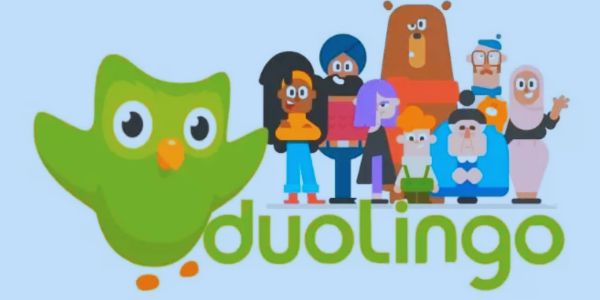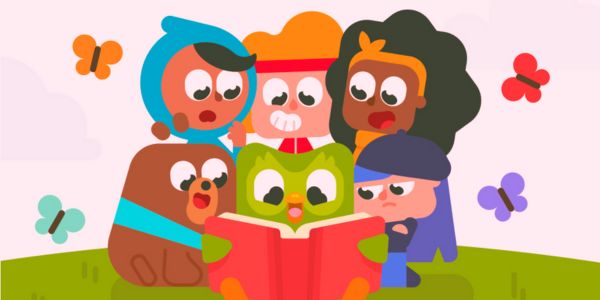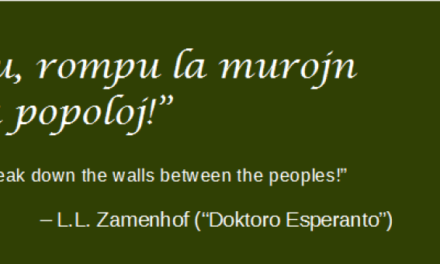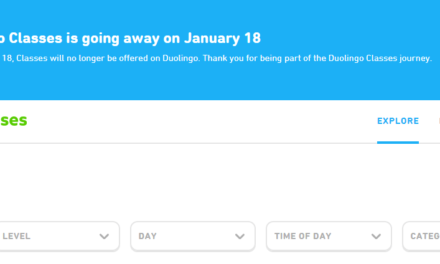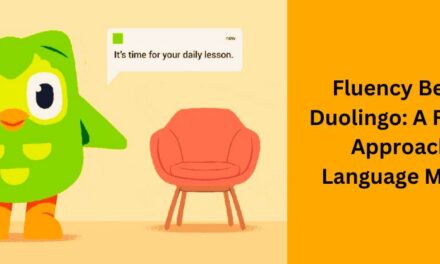Why Duolingo Alone Can’t Make You Fluent in a New Language
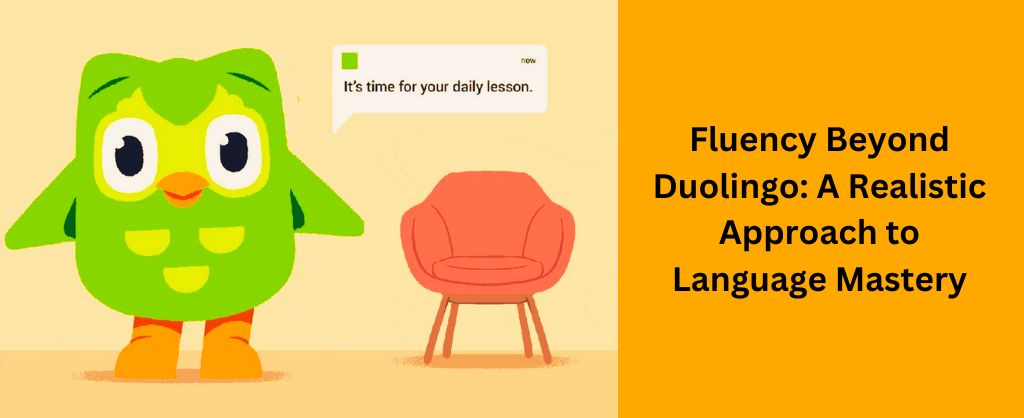
Learning a new language is one of the most rewarding skills you can develop. It opens up opportunities to connect with new cultures, make friends globally, explore different ways of thinking, and give your brain an incredible workout along the way.
But let’s be real – achieving true fluency in another language is no easy feat. The road is long and requires serious commitment. Many aspiring polyglots turn to popular language apps like Duolingo to help them on their journey, thinking it will be the golden ticket to fluency.
I’m sorry to be the bearer of bad news, but Duolingo alone just isn’t enough to make you fluent. Don’t get me wrong – I’m not here to bash on Duolingo. It’s an incredibly valuable tool that I highly recommend incorporating into your language studies. But if your goal is true mastery and fluency, you’ll need to take a more comprehensive approach.
In this article, I’ll explain why Duolingo falls short for achieving full fluency. I’ll break down its key strengths and weaknesses, then outline a more holistic strategy that combines Duolingo with other crucial components. My aim isn’t to discourage you, but to equip you with realistic expectations and a practical roadmap to fluency.
Ready to dive in? Let’s go!
What Duolingo is Great For
First, I want to give credit where credit is due. Duolingo excels at teaching the core building blocks of vocabulary and grammar through its gamified, addictive app.
Vocab Like A Champ
Duolingo’s bite-sized lessons and colorful characters make expanding your vocabulary pretty darn fun. Through tried-and-true methods like spaced repetition and reinforcement, Duolingo ensures those new words and phrases really stick.
After diligently working through a Duolingo course, you’ll know all the key nouns, verbs, adjectives and more in your target language. You’ll be able to read basic sentences, translate common expressions, and understand simple conversations fairly well.
Grammar Made (Somewhat) Graspable
We all know grammar can be the touch-and-go beast of language learning. Duolingo does a decent job of teaching grammatical patterns and rules in a relatively painless manner.
Through its enjoyable, interactive exercises, you’ll start internalizing crucial grammar concepts. You’ll understand how to conjugate verbs, how adjectives and nouns change form, and get a solid grasp of the basic language structure.
Of course, high-level grammar minutia is where Duolingo falls short. But for beginner to intermediate grammar, it provides a user-friendly, low-stress way to build your foundations.
So in a nutshell – if you’re aiming to learn core vocabulary and grammar fundamentals in an app that feels more like playing a game than taking a class, Duolingo is a fantastic resource to incorporate.
But here’s where the rainbows and butterflies end…
What’s Missing From Duolingo (And Why It’s A Problem)
Language is so much more than vocabulary lists and grammar drills. While Duolingo does an alright job teaching those basics, it lacks some pretty critical components needed for well-rounded, advanced level skills. Let’s break these down:
1) Unnatural Language Usage
Have you ever found yourself in a conversation saying things like “The cat drinks the milk” or “Where is the large banana”? Unless you’re simultaneously learning English as a second language, probably not.
The language examples Duolingo uses are super canned and out-of-context. They help cement concepts, sure, but they don’t actually prepare you for how real native speakers communicate.
Language in the real world is messy – filled with idioms, slang, cultural context, implied meanings, and mumbled syllables. Mastering the “DuolingoScript” just doesn’t cut it for fluency.
2) Major Listening and Speaking Limitations
Reading and writing exercises alone do not a fluent speaker make. Being able to communicate effectively requires ample listening comprehension and speaking practice – two areas where Duolingo really drops the ball.
For listening practice, Duolingo offers some basic audio transcription exercises. But they’re extremely limited, with simple sentences and zero background noise or accents. Certainly nothing like the rapid-fire convos you’d encounter in the real world.
As for speaking abilities, Duolingo has you periodically repeat words and phrases out loud using their speech recognition software. But there’s little substantive feedback on your pronunciation, intonation, or overall speaking quality. It’s basically just parroting on your own.
Developing natural conversational skills is crucial for fluency. But Duolingo doesn’t provide opportunities for open-ended dialogue, back-and-forth exchanges, or realistic speaking scenarios.
So while it hits grammar and vocab hard, those core communication skills get neglected.
3) Language Without Any Cultural Context
Language and culture are inextricably intertwined. How we communicate, the idioms and slang we use, our body language and tone – they’re all deeply rooted in the cultural context surrounding that language.
The way you talk to your Polish friends will likely be different than with Spanish friends, even if your vocabulary knowledge is equal. Things like values, customs, history and current events all influence language usage and communication styles.
But alas, Duolingo teaches languages devoid of any specific cultural context or nuance. You’re essentially learning the mechanics of a language in a vacuum, separate from the rich world surrounding it.
This lack of cultural competence can make it really difficult to use your language skills appropriately. You might know grammar rules, but miss important social cues, implications, or unwritten codes of polite conversation.
4) A One-Size-Fits-All Approach
Here’s another big knock against the owl – Duolingo uses a super rigid, one-size-fits-all teaching approach that doesn’t adapt well to each individual’s needs.
Every learner is different. We all have varying goals, preferred learning styles, current proficiency levels, and personal interests when it comes to picking up a new language.
A total beginner learning from scratch may feel lost without explicit grammar lessons and instructions. Intermediate learners could find the Duolingo content too basic or get bored with the repetitive exercises. And advanced speakers likely won’t get much value at all.
There’s no ability to customize or tailor the curriculum to focus more on reading, writing, speaking or any specific skill you want to prioritize. It’s Duolingo’s way or the highway.
So in summary – while Duolingo provides a solid foundation in vocabulary and grammar concepts, it’s lacking in several crucial areas:
- Authentic, real-world language examples
- Robust listening comprehension and speaking practice
- Cultural context around language usage
- Customization for individual learners’ needs
Using Duolingo alone without addressing those gaps means you’ll likely plateau and struggle to reach true fluency. But don’t fret! With the right supplemental tools and approaches, those limitations can easily be overcome.
A Comprehensive Plan for Fluency
The reality is that no single language app, class, or method can make you fluent all on its own. Achieving fluency requires a multidimensional approach that touches on all aspects of communication.
Here’s what a well-rounded study plan incorporating Duolingo could look like:
Conversation Practice with Native Speakers
Fluency can’t be attained by just studying solo. You need to actually use the language by conversing with native speakers as much as possible.
The more you immerse yourself in back-and-forth dialogues, the better you’ll understand the rhythm, intonations, and implied meanings of how the language is truly spoken. You’ll also build cultural competence by learning firsthand about the mindsets and perspectives of native speakers.
Expect it to feel uncomfortable and awkward at first – that’s all part of the process! But stick with it, and your conversational abilities will skyrocket.
Listening to Native Media
Reading and writing abilities are great, but communicating effectively requires intense listening practice too. That’s where immersing yourself in native podcasts, TV shows, movies, music and YouTube content becomes so valuable.
Start off with resources intended for language learners, which have simpler speech and visual aids to support your comprehension. As you progress, advance to native-level media to pick up on more nuanced speech patterns, slang, idioms, and conversational speed.
I highly recommend finding content related to your own interests and hobbies – whether that’s sports, cooking shows, comedy sketches or anything else. Having that inherent interest and familiarity with the topics will make listening practice feel less like a chore.
Listening to native media while reading along with transcripts is also a great way to reinforce your skills. You’ll be able to connect how words are spelled to how they actually sound.
Reading Native Resources
Reading content created for native speakers, not textbooks or learners, is an absolute must for achieving literacy and fluency.
Start out with resources intended for young readers like children’s books, short stories, and blogs. As your skills improve, challenge yourself by reading newspapers, magazines, novels and other materials aimed at an adult native audience.
Make sure to always have a dictionary or translation tool nearby when first starting out. Looking up unfamiliar words and expressions to understand their meaning in context is crucial. You’ll rapidly expand your vocabulary this way while also internalizing grammar, idioms, and tone.
Reading out loud is another phenomenal practice technique to develop your pronunciation, intonation, and reading comprehension simultaneously.
Getting Feedback From Teachers/Tutors
Duolingo is fun and all, but there’s no substitute for personalized feedback from a qualified language instructor or tutor. Unlike the Duolingo owl, an actual human can provide in-depth critiques and guidance to improve your speaking and writing abilities.
Consider finding an online language tutor, even for just bi-weekly or monthly sessions. Having them review writing samples, practice conversations, and provide pointers on your pronunciation can help rapidly elevate your skills.
Or seek out advanced speakers or teachers willing to be informal “language mentors” who simply look over your work and chat with you. Their expert insights can catch errors, clear up confusions, and offer suggestions that Duolingo’s automated approach can’t provide.
Learning About the Culture
Earlier we discussed how deeply intertwined language and culture truly are. For this reason, taking time to study the cultures surrounding your target language is absolutely indispensable.
Immerse yourself in the history, traditions, humor, values, current events and societal forces that all influence how the language is used. Watch documentaries, read about cultural figures, and seek out blogs or books that provide insight into native mindsets and perspectives.
Understanding the rich context behind language usage and communication styles will deepen your linguistic competence and fluency.
Using Duolingo as Your Launchpad
At the end of the day, Duolingo absolutely still has a valuable place in your language toolbelt – you just can’t treat it as the definitive, one-stop solution for achieving fluency.
Use Duolingo consistently as a rock-solid way to build your core vocabulary and grammar foundations. Take advantage of its strengths and addictive gamification to ensure those fundamentals get cemented.
But view Duolingo as the first step, the launchpad – not the entirety of your language studies. Supplement it liberally with the speaking, listening, reading, and cultural components outlined above for a holistic, 360-degree approach.
The Long Game of Fluency
Here’s the hard truth about fluency: It requires an enormous amount of diligent, consistent, long-term practice and skill-building across multiple disciplines.
There are no shortcuts, no revolutionary apps, no miracle techniques that can make you fluent in just a few months or even years. It’s simply a long game that tests your patience, commitment and passion for the language.
But for those willing to embrace that reality and combine Duolingo with tools like conversation partners, native media, reading resources, tutoring and cultural immersion – the incredible satisfaction of fluency is absolutely attainable.
The key is to make your language studies sustainable, engaging, and well-rounded. Mix up your practice methods and resources to work on all competencies equally. Celebrate small wins and use those motivational boosts as fuel for your ongoing journey.
So don’t give up on your Duolingo buddy Duo just because he can’t make you bilingual all on his own. Keep him around as a key component of your language regimen, integrated with the other crucial elements needed for true mastery.
Consistent effort paired with diverse training methods is the recipe for fluency success. It’s a long road, but every conversation, every paragraph read, every cultural insight gained will compound massively over time.
Trust the process, embrace the commitment, and you’ll be amazed at the fluency heights you can reach. The world will feel much bigger, richer, and more connected when you’ve opened the door to a whole new language and culture.
So vamanos, bonne chance, shubh arambh – or whatever well-wish fits the language you’re chasing fluency in!
Mastery awaits those who combine passion with a strategic, multidisciplinary approach. Don’t let Duolingo’s limitations stop you from realizing your full multilingual potential.

